We all know that color is a superpower in design, right? It can completely transform a space, making it feel cozy, calm, vibrant, or even energizing. But how do you actually use color to make your bedroom feel exactly the way you want it? The beautiful color schemes you’ve found look fabulous on their Pinterest pins, but how do you know what’s going to work on the walls of your house? I’m putting on my teacher hat (over a decade teaching art overseas!) to help guide you through some simple, no-fuss strategies to giving your bedroom a much-needed refresh with one of the best tools out there: color. If this seems a a little intimidating, don’t worry—I’m here to break it down for you in simple, no-fuss steps.
Are we ready? Well then, let’s dive into some easy and fun strategies to refresh your bedroom using one of the most powerful tools in interior design: color!
Understanding Color Theory: How to Put Colors Together that Look Great!
Okay, I get it: color theory sounds like something you had to memorize in grade school, and maybe you’ve blocked it out since then. But it’s actually super useful when you’re trying to figure out what colors to put together in your home. The good news? You don’t need to spend years learning about the science of color to use it effectively. In fact, I’m going to show you the basics, and you’ll be making color combos like a pro in no time.
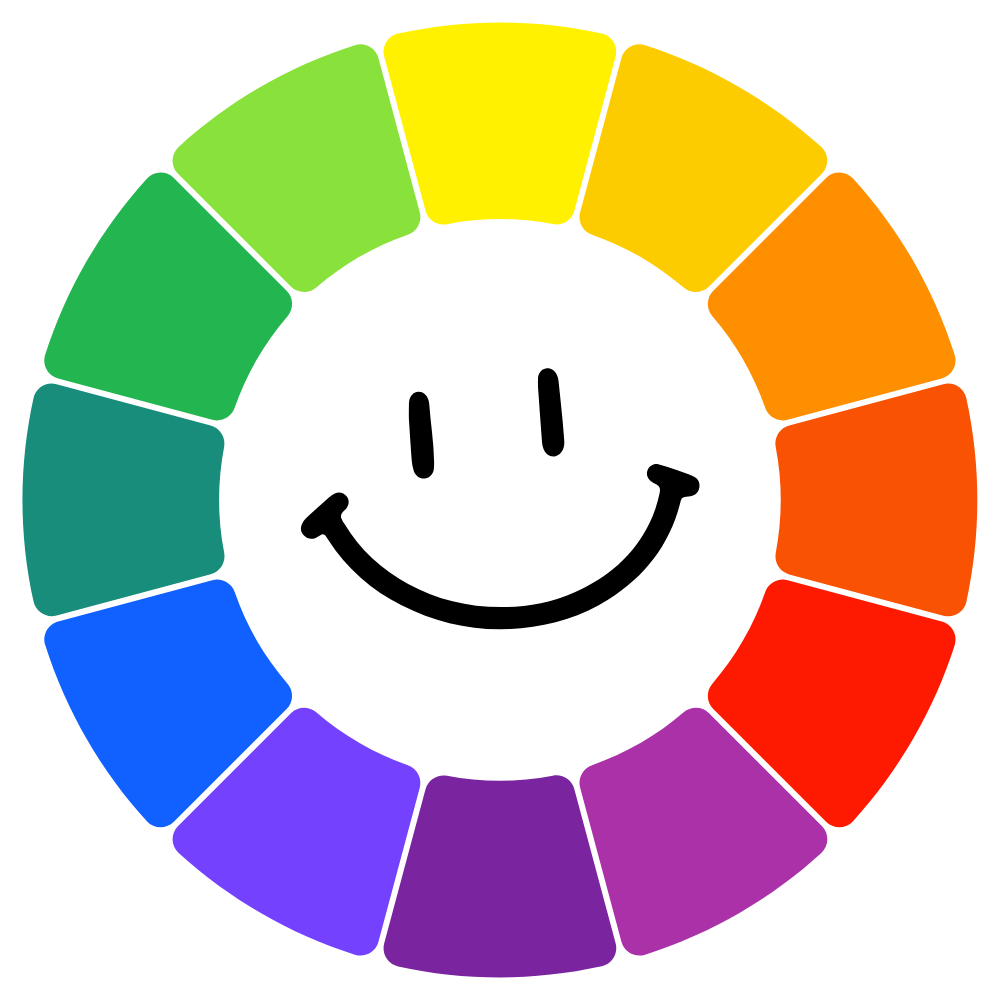
Here’s a basic color wheel—maybe you’ve seen one before. (Probably not with a smiley face, I added that to make it less intimidating.) Think of it like a menu at your favorite cafe: it’s the perfect place to start when you’re hungry (for color ideas!). It takes all the colors of the rainbow and simplifies them into 12 basic hues, helping you see what works together at a glance.
Let’s keep it simple. I’m going to introduce you to three of the most common and easy-to-understand color schemes. Ready?
1. Complementary Color Schemes: Bold, Balanced & Totally Eye-Catching
Okay, you’ve probably seen complementary colors before—red and green, blue and orange, purple and yellow. These are colors that sit opposite each other on the color wheel. When you pair them together, they do something magical—they pop.
Complementary color schemes are perfect for creating a balanced yet dynamic space. These combos are bold, full of contrast, and grab your attention. Think about it: sports teams, holiday decorations, and even your favorite cartoons often use complementary colors to make their branding stand out (hello, Denver Broncos with their orange and blue!). Want to create a bedroom that feels full of energy and excitement? A complementary color scheme could be exactly what you need. For example, try a cozy room with a deep turquoise (blue-green) accent wall and peach (red-orange) pillows. The two colors will make each other shine!

2. Analogous Color Schemes: Simple, Stylish & Totally Soothing
If you’re looking for something a little softer, an analogous color scheme might be your ticket. These are colors that sit next to each other on the color wheel—think shades of blue blending into green, or yellows fading into oranges. They work together because they’re naturally related, and they create a smooth, harmonious flow.
These kinds of color schemes are everywhere in nature: think of a serene lake with blue water that fades into green shores, or the gorgeous gradation of colors in a sunset. It’s visually pleasing, sophisticated, and, honestly, super easy to work with.
Try a bedroom refresh with soft blues, light greens, and soft yellows—these colors will instantly make your space feel cozy, put-together, and stress-free. No need to overthink it—just a few neighboring hues, and you’ve got yourself a beautiful, calm room.
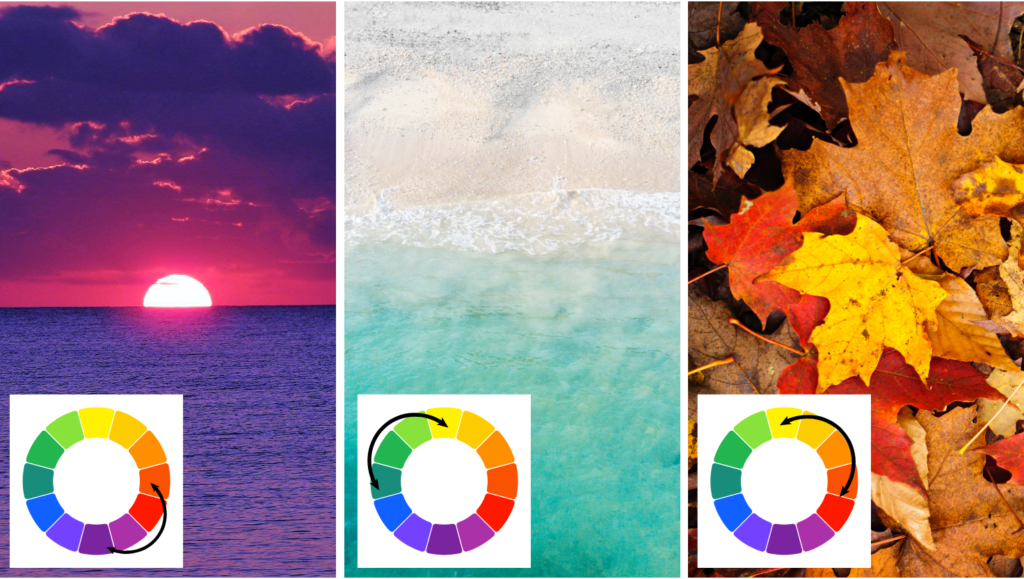
3. Monochromatic Color Schemes: Sleek, Minimalist & Perfectly Polished
Monochromatic might sound fancy, but it’s actually one of the easiest and most elegant ways to use color. It means using just one color, but in varying shades, tints, and tones. For example, instead of using just red, you’d play around with dark crimson, soft rose, and pale pinks to create depth and interest.
This scheme is super popular in minimalist design because it creates a clean, cohesive look. Think of a sleek, all-gray room—soft gray walls, a charcoal gray bedspread, and silver accents. It’s simple, stylish, and modern.
Monochromatic color schemes also work great for creating a sense of serenity and calm, making them perfect for bedrooms where you want to wind down and relax.
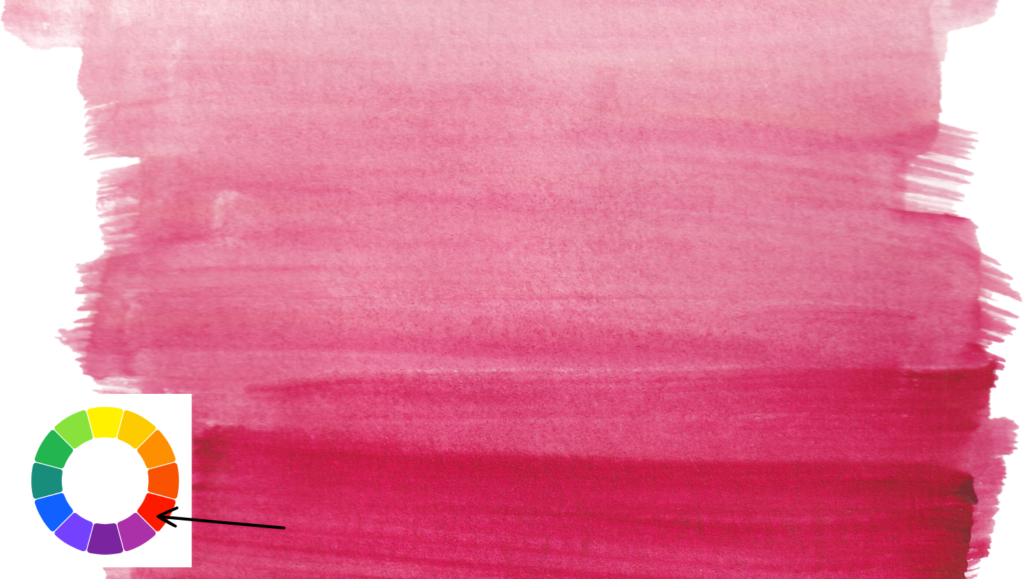
Designing Your Own Bedroom Using Color Theory
Okay, so now that you’re a color theory whiz, let’s think about how to apply these schemes to your own bedroom. Start by figuring out the vibe you want. Here are some ideas to help you choose a color scheme that matches your goals for the room:
- Bold & Exciting? Consider complementary colors! A room with turquoise walls and peach or coral accents will instantly feel energetic and dynamic.
- Stylish Serenity? Go for an analogous scheme. Soft blues, greens, and yellows will create a peaceful, calming flow that’s perfect for winding down.
- Sleek & Modern? Try a monochromatic scheme with your favorite color, like a calming pale purple room with varying shades of purple in the decor. It’ll feel modern and put-together without overwhelming the senses.
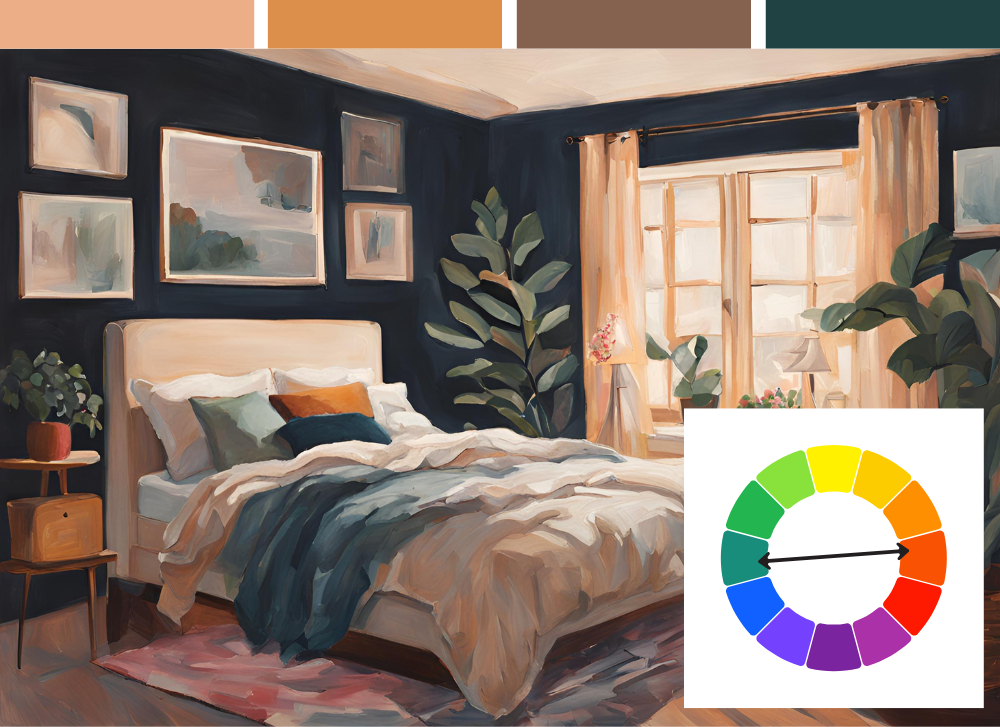
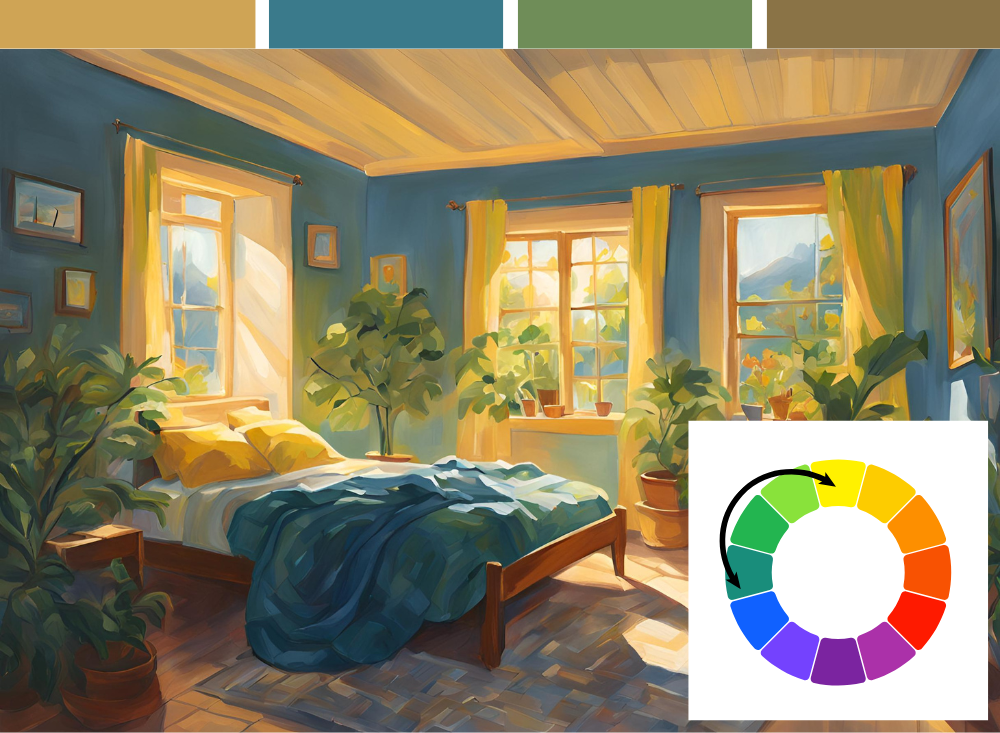
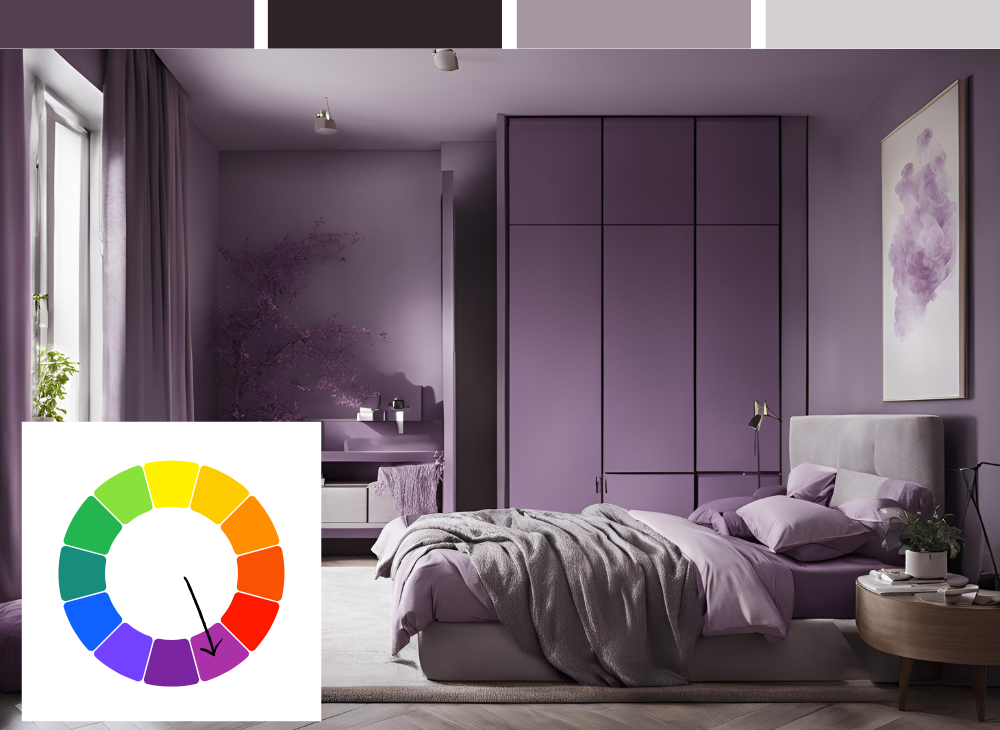
Understanding Color Psychology: How to Use Color to Affect Your Mood
Okay, now for the fun part—color psychology! Did you know that colors can actually influence your mood and emotions? They’re not just pretty to look at—they can also help you feel a certain way. While not as deeply researched and studied as color theory, the psychology of color has long been used to design spaces that perfectly suit their intended purpose. The combination of culture, traditions and how different light waves affect our brains create deep, personal meanings to colors–meanings that you can take advantage of to create the room that feels just how you want it to! So let’s dive into how you can use color to create a space that feels just right for you.
Here are some common color associations and how they can affect your mood:

Blue: Calm, relaxed, and perfect for sleep. Soft blues on your walls, linens, and accessories can make your bedroom feel like a peaceful retreat.
Yellow: Uplifting and energetic, but use sparingly! A pop of yellow on pillows or a rug will add warmth and cheer to your room without overstimulating the senses.
Green: Balanced and refreshing. Green is great for creating a peaceful environment, and it brings a bit of nature indoors. Add houseplants or a light green accent wall to keep the space grounded.
Purple: Creative and luxurious. Want a bedroom that feels sophisticated and inspiring? Deep purples and lavenders bring a sense of luxury and creativity to your space.
Red: Passionate and intense. While great for energizing a space, red can be overpowering in a bedroom, so it’s best used sparingly, perhaps in artwork or small accents.
Black: Mysterious and intimate. Black walls or a black headboard can create a cozy, private, and somewhat dramatic space.
Brown: Earthy and warm. Think wood accents, leather furniture, or rich brown rugs. Brown helps create a cozy, grounded feel in your bedroom.
Designing Your Bedroom Refresh Using Color Psychology
Now that you know how color can affect your mood, let’s talk about putting that knowledge to use.
Pick a Mood and Design Around It
Want to feel relaxed and peaceful in your bedroom? Choose calming colors like blue and green for walls and bedding. Want to wake up feeling energized? Consider adding yellow or orange accents. The key is to choose colors that match how you want the room to feel, not just how it looks.
Pinterest Reading: Find Your Color Soulmate
Here’s a little secret: Pinterest is amazing for figuring out your color preferences! Grab your favorite Pinterest boards or mood boards and start looking for common patterns in the colors you’ve pinned. What colors do you gravitate towards? What hues make you think, “Yes, I need this in my room”? This simple exercise will help you find the perfect palette that feels like you. If you can’t seem to spot the patterns, grab a family member, friend, or even your favorite AI to try to find what’s hidden in plain sight.
Credit for this idea (which I have used for years!) goes to Myquillyn Smith, author of great interior design books like The Nesting Place. I found this particular idea in her book Cozy Minimalist Home: More Style, Less Stuff. I highly recommend this quick, breezy read for lots of advice and inspiration, by the way!
Refreshing Your Bedroom Using Your Newfound Color Knowledge
Now that you’ve got the basics down, let’s talk about how to actually refresh your bedroom. You don’t need to overhaul everything—small changes can make a huge difference. Here are a few ideas for incorporating your new color knowledge:
- Accent Walls: Choose one wall to paint with a color that brings balance or energy to the room. If you’ve picked complementary colors, this is an easy way to make a bold statement. You can see a living room design I created that used an accent wall (and learn more about my color-picking process) in this post.
- Pillows, Rugs & Art: These are your best friends! You can add color without overwhelming the space. Try mixing and matching textures and tones to bring in your color scheme while keeping the space comfortable and visually interesting. If you’re interested in rugs, I go into depth about what makes a good, space-transforming rug in this post.
- Blending Colors: Don’t be afraid to mix different tones together! If you’re working with an analogous scheme, play with different shades of the same color. This will keep the space looking cohesive without feeling monotonous. If you’d like some more ideas about color schemes, I have tons of them on this blog. My favorite takes one shade of light brown and uses it as a basis for 5 completely different (and totally gorgeous) color schemes.
Yes, transforming your room can be incredibly simple and cost-effective, especially when you have terrific tools (like the knowledge of how color theory and color psychology works) at your disposal. Take a look at your room right now. What are one or two things you can change that would make a big impact?
Key Takeaways:
Color is a Powerful Tool – It can completely transform your space! Use color to create the mood, vibe, or energy you want in your bedroom.
You (Yes You!) Can Use Color Theory – You don’t need a degree to use color effectively! Use the color wheel to explore three key color schemes:
Complementary: Bold, eye-catching, and energetic.
Analogous: Soothing, harmonious, and nature-inspired.
Monochromatic: Sleek, minimalist, and calming.
Color Psychology Matters – Colors don’t just look good, they can make you feel a certain way. Choose colors based on the mood you want to create.
Use Pinterest to Find Your Color Soulmate – Browse your mood boards and find recurring colors to help guide your personal palette. Bonus points if you let a friend (or AI!) help you spot patterns!
Small Changes Make a Big Impact – You don’t need to redo everything! Accent walls, pillows, rugs, and artwork are perfect ways to incorporate new colors without overwhelming the space.
Experiment and Have Fun! – There’s no “wrong” way to use color in your bedroom. Trust your instincts, and create a space that feels uniquely you.
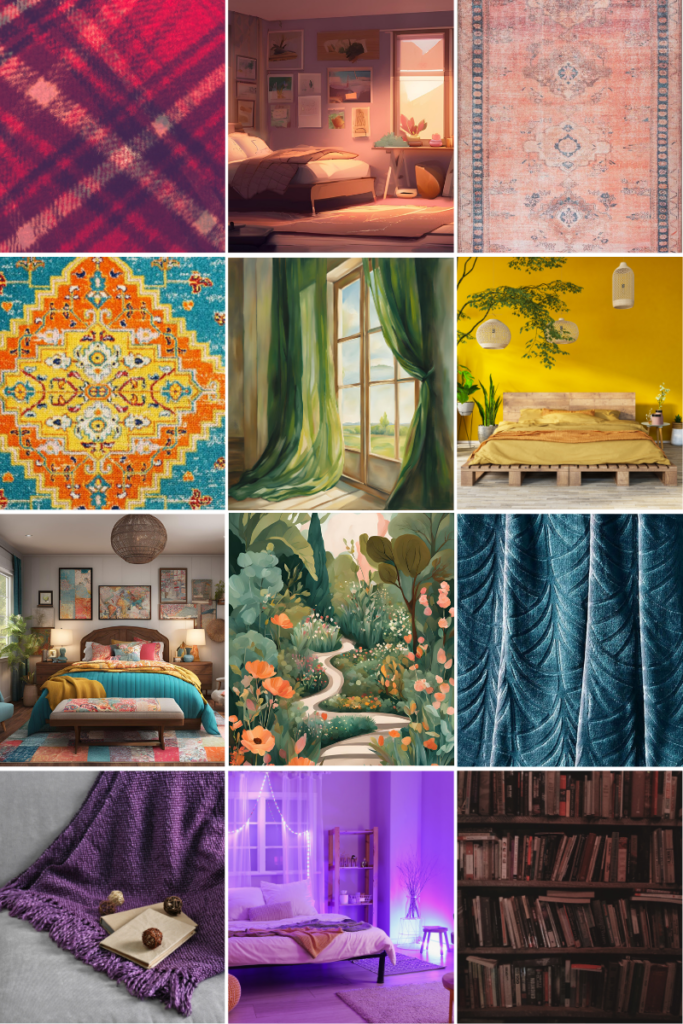
Conclusion
Color is one of the easiest and most impactful ways to refresh your bedroom—and the best part? There’s no wrong way to do it! Experiment with different color combinations, trust your instincts, and create a space that makes you feel amazing. After all, your bedroom is your personal retreat, and the color you choose should reflect you. So go ahead—let color work its magic!

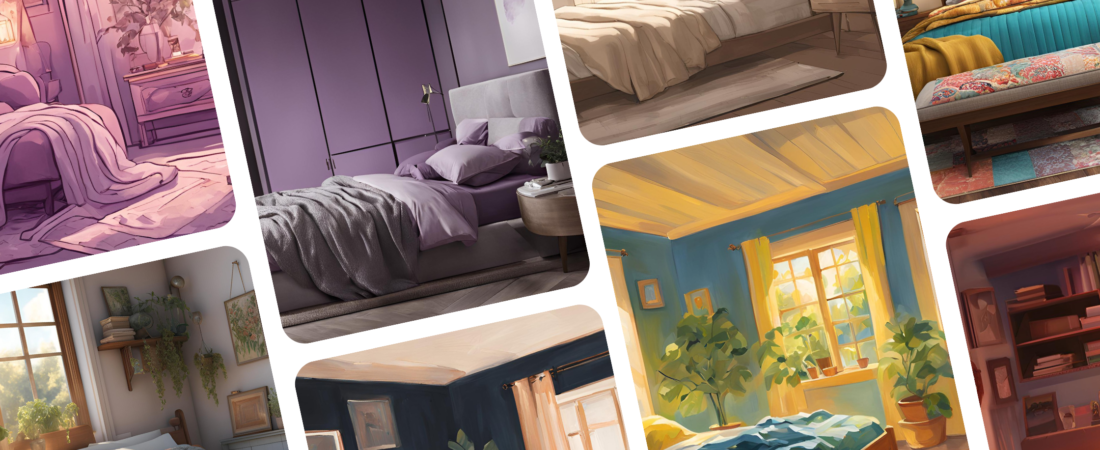

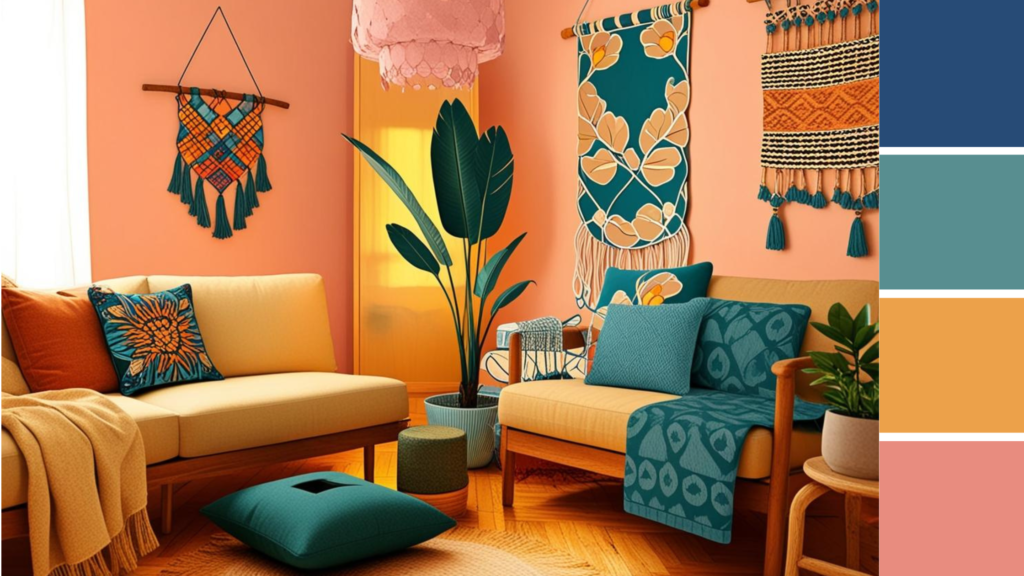


Leave a Reply